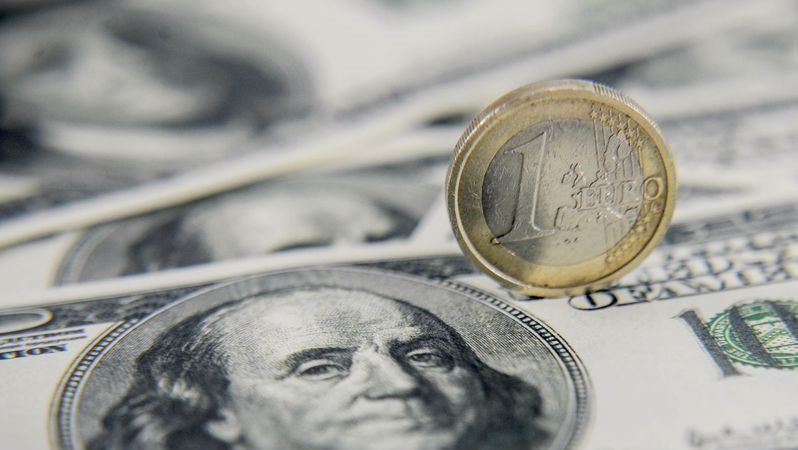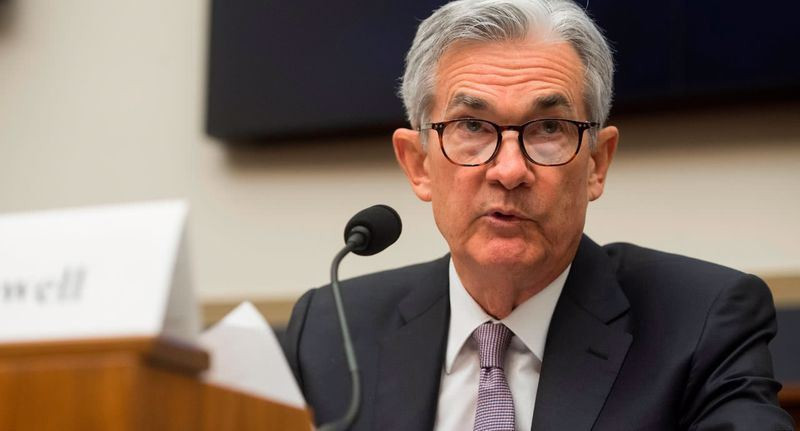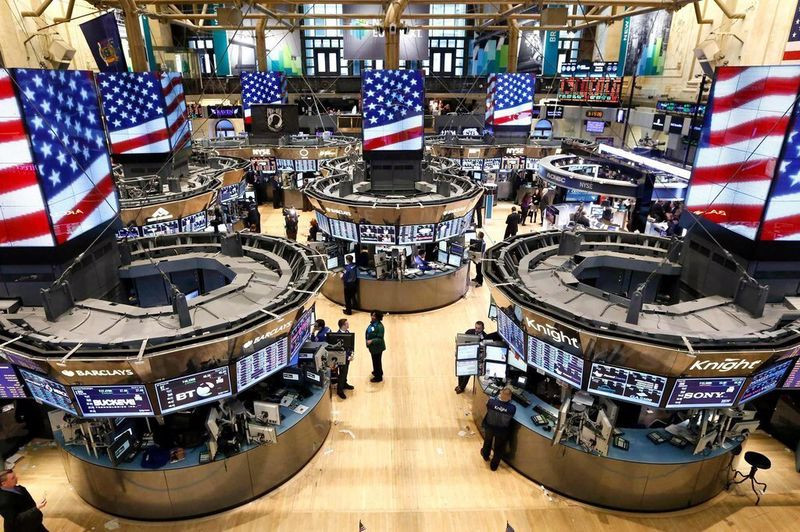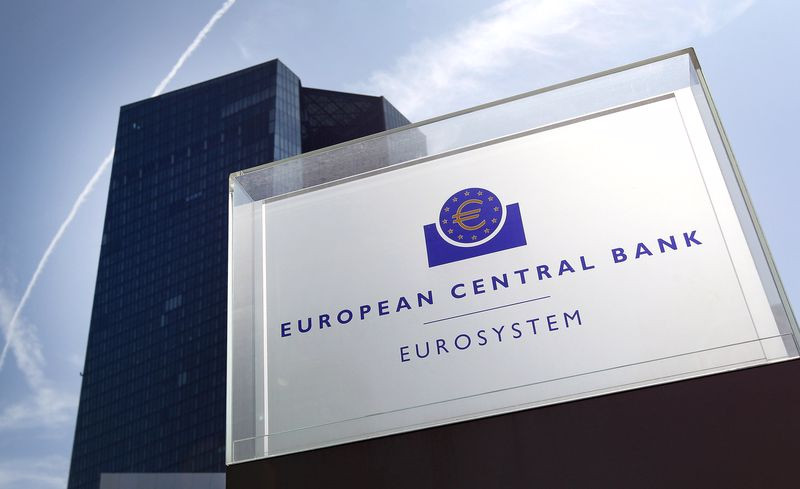
Sentiment close to panic provoked a storm in the financial markets on Thursday.
The main beneficiary of the market turbulence was the greenback, which strengthened for the fifth consecutive day.
Following the results of Thursday trading, the US currency rose by almost 0.8% to 104.80, having previously touched the highest level since December 2002 in the area of 104.90.
Meanwhile, the EUR/USD pair lost more than 100 points on Thursday and finished around 1.0380 after falling to the lowest values since January 2017 around 1.0355.
JPMorgan notes that the recent strengthening of the dollar is due to the reassessment of forecasts of economic growth outside the United States towards a slower pace. Despite the fact that the Federal Reserve has so far rejected the idea of raising the key rate by 75 basis points, long positions on USD should be held, according to the bank's analysts.
Capital Economics analysts agree with them, as they expect that the greenback will grow against almost all currencies during the current cycle of tightening monetary policy in the United States.
"The USD index will reach a multi-year high of 108 points by the end of the year. Based on the analysis of past cycles, the relative position of the monetary policy of the Fed and other major central banks is a key factor determining the dynamics of the dollar," Capital Economics reported.
Fed Chairman Jerome Powell said on Thursday that the central bank intends to act decisively to return US inflation to the 2% target, even if this creates problems for the economy in the short term.
"This process will be painful, but it will be most difficult if we cannot cope with inflation. In the end, we would have to go through a much deeper recession," said Powell.
A batch of fresh data from the United States showed that producer prices in the country slowed down in April, but, like CPI, turned out to be higher than forecasts.
The US Department of Labor reported that last month the producer price index increased by 11% year-on-year after rising by 11.5% in March. Experts on average expected to see the indicator at the level of 10.7%.
These data served as a reminder that the price pressure in the country is being reduced reluctantly and at this stage requires the active participation of the Fed in the form of an aggressive increase in the cost of lending.
"If the US economy performs approximately as expected, it would be appropriate for an additional 50 basis point rate increase to be made at the next two FOMC meetings," said Powell.

Such prospects do not please the markets, which are already accustomed to the Fed's soft monetary policy.
The S&P 500 index on Thursday was at arm's length from confirming that it had entered a bear market after falling from a record high reached on January 3.
At the moment, the index was down 2% to 3,860 points, but when the dust settled, the S&P 500 reduced losses and ended trading around 3,930 points, down 0.13%.
According to Deutsche Bank estimates, the aggregate positioning of investors on stocks has fallen to the lowest level since the sell-off caused by COVID-19 in 2020.
Traders are now starting to worry about the possible start of a prolonged recession or a stock market crash, and some have even decided to close all their positions and sit out the storm in the money, UBS analysts say.
"If you look at the history of what happened with inflation combined with high valuations and supply problems due to the conflict in Ukraine, it creates a very bleak picture for stock markets," they said.
Nevertheless, there are people who are holding on and hoping for a rebound, experts at Brandywine Global Investment Management say.
"However, to mark the end of the sales, the market needs a moment of loud failure and pain," they believe.
Investors are increasingly doubting the ability of the US central bank to ensure a "soft landing" of the economy and consider the central bank's reaction to the surge in price pressure belated.
Powell admitted that looking back, it would be better to start raising rates earlier this March, given that inflation began to rise sharply in 2021.
"Markets now consider the option of a "hard landing" of the economy and further tightening of measures by the Fed more likely," BlackRock strategists said.
The losses of the S&P 500 for the current year are about 16%. How low can the market fall?
It is quite difficult to give an exact answer at first glance.
However, if we turn to technical analysis, we will see that the S&P 500 has formed a bearish head and shoulders figure, the full implementation of which will lead the index to 3660 points; the next potential support level may be the level of 3530.
Thus, in general, the S&P 500 will lose about 26%, dropping more than 12% from current levels. If the United States is really waiting for an economic downturn, then the corresponding reaction of the stock market looks quite adequate.

US stock indexes are noticeably gaining on Friday, trading in positive territory.
At the end of the week, market participants prefer to take profits, which leads to a rebound in stocks.
However, analysts note that this growth is not confirmed by any significant factors.
It looks more like the rebound of a dead cat than anything else, analysts at Brigg Macadam say.
They believe that the US stock market will continue to fall, and even large companies will suffer.
"We live in the most chaotic, difficult to predict macroeconomic times in recent decades. The ingredients for a global recession are already on the table. Although the United States can avoid a recession, markets will have to face the growing likelihood of its onset," Morgan Stanley warns.
According to Powell, with a tight labor market pushing wages up, it will not be easy to avoid a recession, which often follows a decisive tightening of policy.
Despite some improvement in market sentiment, investors still prefer safe haven assets, which include the dollar.
Traders fear that rate hikes by leading central banks to curb inflation could harm global economic growth. This, along with fears about the further aggravation of the geopolitical situation in the world, supports the USD, which has taken a pause in growth, but remains near 20-year highs.
Meanwhile, the single currency is trying to recover from the recent collapse.
This week, the euro has declined against the US dollar by 1%.
"In the short term, it is difficult to understand what can change the bearish trend for the EUR/USD pair," MUFG analysts said. They believe that the euro may fall below parity with the dollar within a few weeks or even days amid new bad news.
"If the risks associated with Ukraine do not begin to decrease, it will be very difficult for the euro to rise much higher," MUFG noted.Strategists at Barclays said that the euro will fall below parity against the dollar if Russia stops gas supplies to the EU as part of the escalation of the military conflict in Ukraine.

"If Russia closes its gas taps to Europe, we expect the EUR/USD pair to fall below parity. According to our estimates, a complete loss of Russian supplies, combined with rationing of the balance, could lead to a decrease in eurozone GDP by more than 5 percentage points within one year," Barclays reported.
High inflation in the eurozone, the prospects of tightening anti-Russian sanctions by the West affecting the energy sector, and the low European Central Bank discount rate are putting pressure on the single currency.
This year, the euro exchange rate risks falling to parity with the US dollar, as the threat of a recession in the eurozone limits the ECB's ability to raise rates, Amundi analysts believe.
In their opinion, the ECB will give preference to curbing the cost of borrowing for EU states, rather than fighting inflation. In this regard, the ECB will seriously fall behind its American counterpart in raising rates and fighting inflation, which will lead to a fall in the euro to $1 for the first time since 2002.
The FOMC has raised the rate by 75 basis points since March and is expected to continue to tighten monetary policy rapidly at upcoming meetings. At the same time, traders expect that by mid-2024, the ECB deposit rate, currently -0.5%, will reach 1.5%.However, the market is overestimating how high the ECB will be able to raise rates before it is stopped by the economic downturn and a jump in the cost of borrowing for countries with the highest debt burden, Amundi analysts say. They predict that the ECB will raise the deposit rate twice this year by 25 bps.

"We believe that the European Central Bank will bring the deposit rate to zero, and that's all. During the same time, its American counterpart will do much more. If the ECB focuses exclusively on curbing inflation, the rate may be raised to 1.5%. However, this is unlikely to be the case," analysts said.
"In the context of the Russian-Ukrainian conflict, the ECB focuses on the financial needs of states that will have to pay for energy transfer and defense. The central bank has no choice but to get involved in this political project," they added.
The euro is struggling to extract any tangible benefits from the increasing hawkish tone of ECB officials. However, an increase in interest rates in the eurozone by 80-85 basis points has already been included in the quotes until the end of the year. In addition, uncertainty remains as to whether the ECB will be able to achieve an even greater increase later, given the deteriorating economic outlook in the eurozone, ING strategists say.
"The EUR/USD pair is in close proximity to the key support of 1.0340, the breakthrough of which will make the risk of achieving parity quite significant. We won't see each other seeing the pair at the level of 1.00 in the near term. After the loss of the "anchor" of 1.0500, the volatility of EUR/USD may well increase again," they said.
TD Securities economists have a similar opinion. They believe that the main currency pair can still reach 1.0340, the 2017 low, and a break below this mark will open the way for EUR/USD to return to parity.
"The last fall of the EUR/USD pair below 1.0500 is aiming for 1.0340. A breakthrough of this level will open a return to parity, a state that was last observed about 20 years ago," TD Securities noted.
The stock rebound observed on Friday weakened the upward momentum of the dollar, so the EUR/USD surpassing the area below 1.0340 may not be a story just yet. However, there are no prerequisites in order for the pair to confidently rise, while the bearish risks remain in force. The fundamental picture still points to a further rise in the USD index, which in the near future will aim to surpass the level of 105.00. The flight from risks can resume at any moment. This will put the protective dollar back on the growth trajectory and put pressure on EUR/USD.
 English
English 
 Русский
Русский Bahasa Indonesia
Bahasa Indonesia Bahasa Malay
Bahasa Malay ไทย
ไทย Español
Español Deutsch
Deutsch Български
Български Français
Français Tiếng Việt
Tiếng Việt 中文
中文 বাংলা
বাংলা हिन्दी
हिन्दी Čeština
Čeština Українська
Українська Română
Română

